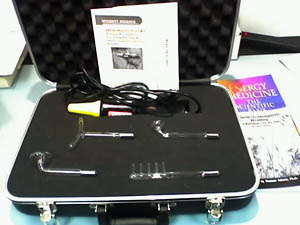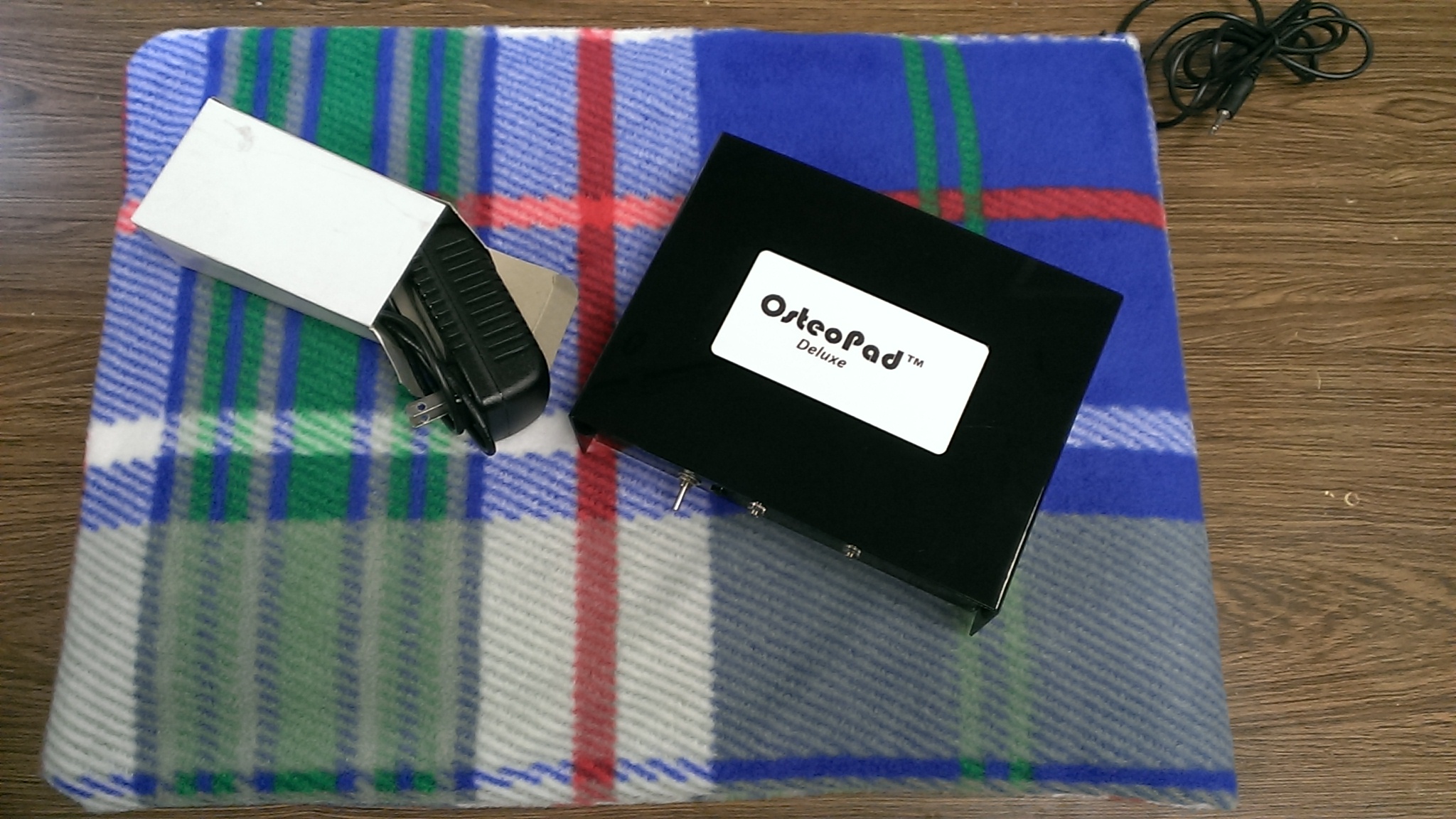|

|
|
|
|
July 2016 
|
As we leave for our Eighth
International Conference on Future Energy (COFE8) www.futurenergy.org this
week, remember that New Mexico is just a puddle jump from the
West Coast and walk-ins are welcome! IRI represents cutting edge,
emerging energy, propulsion, and bioenergetics at these
conferences from the most progressive scientific research organization
in the world. DVDs will be available afterward but live
interactions with the speakers is always very memorable,
especially when they reveal new and exciting technology to solve
the world's problems. What problems? Well for example climate as
2016 is the hottest on record for a third
year in a row . Check out a very informative, animated
website. Another site worth visiting is the relatively
new Center for Climate and Energy Solutions which
features free webinars with expert scientists, as well as
"Innovation to Power the Nation" which was just held
this month at the Carnegie Institution for Science, here in
DC, where I met the President of C2ES and he asked me if he could
keep the Dr. Jim Hansen Climate Beast Graph (which is on our
homepage) that I handed to him. This just confirmed our
conviction that IRI is having a meaningful influence on some of
the key players who seek to solve energy, propulsion, and
bioenergetics issues for the country and the world. Come to COFE8
and see more.
This month we are happy to give
top billing to an amazing Story #1 from the Ecole Polytechnique
Federale de Lausanne (EPFL) which is also called the Laboratory
of Nanoscale Biology in Switzerland. Their discovery of a new,
inexpensive electrical energy source is no less than revolutionary. Called
an "electrokinetic phenomenon" when an electrolyte like
salt is driven through a membrane with plain water on the other
side by osmotic pressure, the process induces a "large,
osmotically induced current" with an estimated power
density of up to a million watts per square meter! See their Nature article
online to believe such an outrageous
allegation. As the reprinted article below states,
once osmotic power becomes more robust, these systems could play
a major role in the generation of renewable energy.
Story #2 explores the next
development in electric vehicles, which IRI has advocated
for years...onboard charging of the battery cells by any means
available. In this case, the Hanergy company uses 40 to 80 square
feet of flexible, lightweight solar cells on the outside of an EV
to give it 50 miles of free energy driving depending on weather
conditions. Don't forget to check out the Related
Stories that we didn't run on the front page but are still
momentous, such as using Saltwater to power a car
for 1,000 kilometers, with a nice video and specs of the
prototype sports car, and a New Way of using Perovskites for
solar cells that are cheaper and more efficient,
up to 31 percent efficient compared to today's 20 percent for
silicon.
Story #3 continues the theme of
solar and optical energy conversion with a "roadmap" of
19 contributed articles. Lucky for you, I printed out the 48-page
FREE
online article and eagerly read and annotated every
article (average two page length) to give my two cents worth in
this section. How about 66% power conversion efficiency
(PEC) from NREL by controlling heat loss and quantum efficiency
(QE) that exceeds 100%? That is in the 5th article by Beard.
However, I also like the 1 nanometer thick layer of
heterostructure that absorbs 10% of the incident light and 90%
efficiency with nanocavities in the 8th article from GWU
here in DC. One of my serious, ongoing favorites is the use
of diodes called "optical rectennas" by Dr. Dagenais at
the U of Maryland down the street from IRI headquarters, in article
#10 for zero external bias (like solar cells) and an
"achievable conversion efficiency" for monochromatic
light of 100%! Another interesting development is the Bermel
article #15 for thermophotovoltaics (TPV) which work in the IR
band, whose efficiency "can exceed 50%". Take that one
step further with "endothermic-photoluminescence"
which is also called a "thermally enhanced photoluminescence
(TEPL) cell" in the #18 Manor article with an efficiency
approaching 70%.
In the area of bioenergetics,
our Story #4 shows a phototherapy method for targeting cancer
cells to be very effective, with about 95% of the cancer
terminated, as reported in the Journal of Clinical Oncology. Once
the cells receive a chemical compound, the light makes the cells
turn very acidic inside which kills the cancer.
In our Story #5, with the nice
wearable device that picks up specially broadcast electrical
plant signals, the authors should have acknowledged the pioneer
of plant consciousness, the famous Cleve Backster, who I met and
conversed with many times. Cleve was a lie detection expert and
trainer who was the first to wire up plants and was featured in
the classic, Secret Life of Plants and Secret Life
of Your Cells. Check out our IRI Backster
Effect report #406 with instructions on how to reproduce his
oral leukocyte experiment.
Remember our environment
matters and an energy breakthrough is essential!
|
|
|
COME THIS WEEK TO OUR CONFERENCE !
JULY 29- 30, 2016
|
|
|
Our Best Selling nano
second PEMFdevice
|
|
|
Our most
popular HIgh voltage device
|
|
|
|
Best NanoSecond PEMF for
arthritis, bone issues
|
|
|
|
1) Electricity Generated with
Water, Salt and Three Atoms-Thick Membrane
|
|
By
RevolutionGreen.com
July 2016
Although the research is still
in its infancy, if I was to give an award to a technology with
the most potential to bring about massive change it is this.I
doubt if it can achieve the the 1MW per square meter due to
material and conductor issue,s but even 1000th of that power
output would be impressive. Using solar desalination the water
can be reused. This is real water power
Or more specifically, energy
generated by a natural phenomenon occurring when fresh water
comes into contact with seawater through a membrane.
Researchers at EPFL's
Laboratory of Nanoscale Biology have developed an osmotic power
generation system that delivers never-before-seen yields. Their
innovation lies in a three atoms thick membrane used to separate
the two fluids. The results of their research have been published
in Nature.
The concept is fairly simple. A
semipermeable membrane separates two fluids with different salt
concentrations. Salt ions travel through the membrane until the
salt concentrations in the two fluids reach equilibrium. That
phenomenon is precisely osmosis.
If the system is used with
seawater and fresh water, salt ions in the seawater pass through
the membrane into the fresh water until both fluids have the same
salt concentration. And since an ion is simply an atom with an
electrical charge, the movement of the salt ions can be harnessed
to generate electricity.
At 3 atoms
thick, selective membrane that does the job
EPFL's system consists of two
liquid-filled compartments separated by a thin membrane made of
molybdenum disulfide. The membrane has a tiny hole, or nanopore,
through which seawater ions pass into the fresh water until the
two fluids' salt concentrations are equal. As the ions pass
through the nanopore, their electrons are transferred to an
electrode - which is what is used to generate an electric
current.
Thanks to its properties the
membrane allows positively-charged ions to pass through, while
pushing away most of the negatively-charged ones. That creates
voltage between the two liquids as one builds up a positive
charge and the other a negative charge. This voltage is what
causes the current generated by the transfer of ions to flow.
"We had to first fabricate
and then investigate the optimal size of the nanopore. If it's
too big, negative ions can pass through and the resulting voltage
would be too low. If it's too small, not enough ions can pass
through and the current would be too weak," said Jiandong
Feng, lead author of the research.
What sets EPFL's system apart
is its membrane. In these types of systems, the current increases
with a thinner membrane. And EPFL's membrane is just a few atoms
thick. The material it is made of - molybdenum disulfide - is
ideal for generating an osmotic current. "This is the first
time a two-dimensional material has been used for this type of
application," said Aleksandra Radenovic, head of the
laboratory of Nanoscale Biology
Powering 50,000
energy-saving light bulbs with 1m² membrane
The potential of the new system
is huge. According to their calculations, a 1m² membrane with 30%
of its surface covered by nanopores should be able to produce 1MW
of electricity - or enough to power 50,000 standard energy-saving
light bulbs. And since molybdenum disulfide (MoS2) is easily
found in nature or can be grown by chemical vapor deposition, the
system could feasibly be ramped up for large-scale power
generation. The major challenge in scaling-up this process is
finding out how to make relatively uniform pores.
Until now, researchers have
worked on a membrane with a single nanopore, in order to
understand precisely what was going on. " From an
engineering perspective, single nanopore system is ideal to
further our fundamental understanding of membrane-based processes
and provide useful information for industry-level
commercialization", said Jiandong Feng.
The researchers were able to
run a nanotransistor from the current generated by a single
nanopore and thus demonstrated a self-powered nanosystem.
Low-power single-layer MoS2 transistors were fabricated in
collaboration with Andreas Kis' team at at EPFL, while molecular
dynamics simulations were performed by collaborators at
University of Illinois at Urbana-Champaign
Harnessing
the potential of estuaries
EPFL's research is part of a
growing trend. For the past several years, scientists around the
world have been developing systems that leverage osmotic power to
create electricity. Pilot projects have sprung up in places such
as Norway, the Netherlands, Japan, and the United States to
generate energy at estuaries, where rivers flow into the sea. For
now, the membranes used in most systems are organic and fragile,
and deliver low yields. Some systems use the movement of water,
rather than ions, to power turbines that in turn produce
electricity.
Once the systems become more
robust, osmotic power could play a major role in the generation
of renewable energy. While solar panels require adequate sunlight
and wind turbines adequate wind, osmotic energy can be produced
just about any time of day or night - provided there's an estuary
nearby.
Reference: Jiandong Feng
et al, Single-layer MoS2 nanopores as nanopower
generators, Nature (2016). DOI:
10.1038/nature18593
Journal reference: Nature
|
|
2) Solar Powered Electric
Vehicles
|
|
By C.C Weiss, Gizmag July 2016
The latest company looking to
power future EVs with sunlight is China's Hanergy Holding Group.
Joining the likes of EVX Ventures (the folks behind the distinctive, Hanergy
unveiled a quartet of thin-film solar cell-equipped vehicles in
Beijing over the weekend, each of which is designed to commute
around and beyond the city without the need to plug in.
Having purchased
California-based Alta Devices several years ago, Hanergy is
working to expand gallium arsenide (GaAs) solar cell technology,
which claims record-breaking conversion rates as high
as 31.6 percent. The cells' lightweight, flexible nature makes
them well-suited for integration into a vehicle's structure, and
Hanergy's concept cars feature between 38 and 81 sq ft (3.5 and
7.5 sq m) of cells. Hanergy estimates that the cells can deliver
about 50 miles (80 km) of driving per day from five to six hours
of sunlight, no external charging involved.
Many a trip runs farther than
50 miles, and weather conditions have a habit of changing, so
Hanergy has also incorporated an external charging port for the
lithium batteries. The company claims the vehicles can drive for
up to 217 miles (350 km) per charge, but it doesn't detail the
size of the battery or layout of its electric powertrain(s).
An intelligent control system
and accompanying app help the driver to manage charging, travel
and weather modes. Ultrasonic cleaning technology keeps the
panels clear of dirt and debris to ensure smooth energy
collection. The four cars are designed in different styles,
including an almost shooting brake-like sports car and a city
hatchback.
Hanergy says that it performed
the R&D for the four vehicles independently and that the cars
can be commercialized. Vehicle integration of thin-film cells is
part of Hanergy's greater mobile energy strategy, which also
calls for using the cells in unmanned aerial vehicles,
mobile electronics, backpacks and clothing.
|
|
3) Roadmap on Optical Energy
Conversion
|
|
By: Svetlana V Boriskina1,25,
et al., Published 24 June 2016 IOP Publishing
Ltd
Journal of Optics, Volume 18, Number 7
Ed.
Note: Nineteen authors total
Abstract
For decades, progress in the
field of optical (including solar) energy conversion was
dominated by advances in the conventional concentrating optics
and materials design. In recent years, however, conceptual and
technological breakthroughs in the fields of nanophotonics and
plasmonics combined with a better understanding of the
thermodynamics of the photon energy-conversion processes reshaped
the landscape of energy-conversion schemes and devices.
Nanostructured devices and
materials that make use of size quantization effects to
manipulate photon density of states offer a way to overcome the
conventional light absorption limits. Novel optical spectrum
splitting and photon-recycling schemes reduce the entropy
production in the optical energy-conversion platforms and boost
their efficiencies. Optical design concepts are rapidly expanding
into the infrared energy band, offering new approaches to harvest
waste heat, to reduce the thermal emission losses, and to achieve
noncontact radiative cooling of solar cells as well as of optical
and electronic circuitries.
Light-matter interaction
enabled by nanophotonics and plasmonics underlie the performance
of the third- and fourth-generation energy-conversion devices,
including up- and down-conversion of photon energy, near-field
radiative energy transfer, and hot electron generation and
harvesting. Finally, the increased market penetration of
alternative solar energy-conversion technologies amplifies the
role of cost-driven and environmental considerations. This
roadmap on optical energy conversion provides a snapshot of the
state of the art in optical energy conversion, remaining
challenges, and most promising approaches to address these
challenges.
Leading experts authored
19 focused short sections of the roadmap where they share their
vision on a specific aspect of this burgeoning research field.
The roadmap opens up with a tutorial section, which introduces
major concepts and terminology. It is our hope that the roadmap
will serve as an important resource for the scientific community,
new generations of researchers, funding agencies, industry
experts, and investors.
|
|
4) New Photodynamic Method to
Kill Cancer Tumors
|
|
|
Joanna Carver,
Medical Xpress, July 2016
Matthew Gdovin, an associate
professor in the UTSA Department of Biology, has developed a
newly patented method to kill cancer cells. His discovery, described in
a new study in The Journal of Clinical Oncology, may
tremendously help people with inoperable or hard-to-reach tumors,
as well as young children stricken with cancer.
Gdovin's top-tier research
involves injecting a chemical compound, nitrobenzaldehyde, into
the tumor and allowing it to diffuse into the tissue. He then
aims a beam of light at the tissue, causing the cells to become
very acidic inside and, essentially, commit suicide. Within two
hours, Gdovin estimates up to 95 percent of the targeted cancer
cells are dead.
"Even though there are
many different types of cancers, the one thing they have in common
is their susceptibility to this induced cell suicide," he
said.
Gdovin tested his method
against triple negative breast cancer, one of the most aggressive
types of cancer and one of the hardest to treat. The prognosis
for triple negative breast cancer is usually very poor. After one
treatment in the laboratory, he was able to stop the tumor from
growing and double chances of survival in mice.
"All forms of cancer
attempt to make cells acidic on the outside as a way to attract
the attention of a blood vessel, which attempts to get rid of the
acid," he said. "Instead, the cancer latches onto the
blood vessel and uses it to make the tumor larger and
larger."
Chemotherapy treatments target
all cells in the body, and certain chemotherapeutics try to keep
cancer cells acidic as a way to kill the cancer. This is what
causes many cancer patients to lose their hair and become sickly.
Gdovin's method, however, is more precise and can target just the
tumor.
In the past two years, he's
developed his photodynamic cancer therapy to the point where it's
non-invasive. It now requires just an injection of the
nitrobenzaldehyde fluid followed by a flash of an ultraviolet
light to cause the cancer-killing reaction. Gdovin has now begun
to test the method on drug-resistant cancer cells to make his
therapy as strong as possible. He's also started to develop a
nanoparticle that can be injected into the body to target
metastasized cancer cells. The nanoparticle is activated
with a wavelength of light that it can pass harmlessly through
skin, flesh and bone and still activate the the cancer-killing
nanoparticle.
Gdovin hopes that his
non-invasive method will help cancer patients with tumors in
areas that have proven problematic for surgeons, such as the
brain stem, aorta or spine. It could also help people who have
received the maximum amount of radiation treatment and can no
longer cope with the scarring and pain that goes along with it,
or children who are at risk of developing mutations from
radiation as they grow older.
"There are so many types
of cancer for which the prognosis is very poor," he said.
"We're thinking outside the box and finding a way to do what
for many people is simply impossible."
|
|
5) First Wearable for Listening
to Your Plants
|
|
|
By Phtyl
Signs.com,July 2016
Editor's note: Cleve
Backster was a lie detection expert and trainer who was the first
to wire up plants and was featured in the classic, Secret Life of
Plants and Secret Life of Your
Cells. Check out our IRI Backster
Effect report #406 with instructions on how to
reproduce his oral leukocyte experiment.
Houseplants have never been known as great
conversationalists, but it's possible we just can't hear what
they're saying. Swiss company, Vivent SARL, is hoping to rectify
that with its Phytl Signs device that picks up the tiny
electrical signals emitted by plants and broadcasts them through
a speaker. The ultimate goal is to translate what the plants are
actually "saying."
The system, which is currently the subject of a
crowdfunding campaign, features two receptors - a stake that is
inserted into the soil next to the plant, and a clip that gently
connects to a leaf. These measure the voltage coming from the
plant, which feeds into a signal processor. From there the
plant-speak is output through a built-in speaker. A smartphone
app can also receive raw data from a plant, allowing analysis of
the signals using data analysis software.
Unlike current plant monitors on the market that
measure environmental metrics like soil moisture and sunlight,
the Phytl Signs device is claimed to pick up on whether your
plant is thriving or stressed, active or quiet, or besieged by
pests. The plant responds immediately to a change in lighting or
the cutting of a leaf with a spike in sound, which is an
electronic howl akin to a theramin. But decoding what the audio
output means is still being worked out by the company.
To that end, the company encourages device owners to
share their data with an online community of fellow users,
allowing the company to crowdsource the data to help them decode
and translate the plant signals so they can be understood.
Ultimately, if and when the signals are translated,
it would allow plant owners to provide the best growing
conditions possible. The company also envisions using the devices
for agriculture research, and on a commercial scale to monitor
crops and potentially improve yields and minimize water use. It
can be used on any plant as long as the leaf is wide enough for
the clip to connect.
The company has launched
a Kickstarter campaign to produce its gadgets, improve
its software and further study what the plant signals mean. The
minimum pledge level for an Explorer kit is CHF129 (approx.
US$130), with shipping slated for April, 2017 if everything goes
as planned.
|
|
If you
enjoy this service, please consider making a donation by
clicking on the button below. We are a 501 (C)3 Non Profit
Institute and your donations are fully deductible to the maximum
allowed by law.
|
|
|
|
|
|

|
|
![]()






















